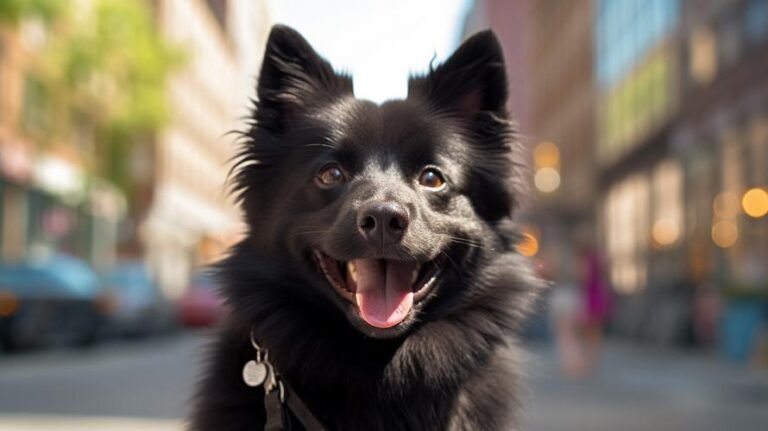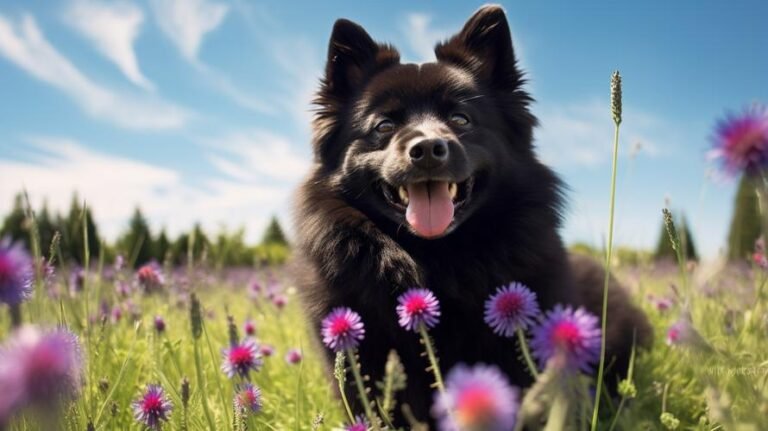Close your eyes and imagine a sleek, black, fox-faced little dog with sharp ears and an adorable fluffy ruff. It stands tall, its eyes full of mischief and curiosity, prickling with energy. You’re picturing a Schipperke, a unique breed from Belgium, often referred to as the “little black devil” due to its lively, fearless, and sometimes stubborn personality. One thing that often traverses the mind of a prospective dog owner is the level of maintenance a particular breed demands. However, before we dive into specifics, let’s embark on an exciting journey to understand the nature, temperaments, and the specific needs of this endearing breed.
The Schipperke breed has a history dating back to the 16th century, with origins entrenched in the Flemish region of Belgium. Initially, these dogs were employed on riverboats to keep away vermin and act as vigilant watchdogs. Their striking black coat, compact size, and buoyant personality make them a fascinating breed to explore.
Schipperkes belong to the small breed category and they usually weigh between 12 to 16 pounds and stand about 10 to 13 inches high. With a lifespan of around 12 to 16 years, they are known for their longevity. They are agile creatures, brimming with curiosity and are quite protective of their family. They are independent, intelligent, and always up for a game or activity, making them ideal pets for families with children.
Diving into the crux of our discussion, you may be wondering, is the Schipperke a high-maintenance dog? In comparison to other breeds, not extraordinarily so. Nevertheless, having a Schipperke does entail some responsibilities that involve grooming, feeding, exercising, and providing a mentally stimulating environment.
Firstly, when it comes to grooming, a Schipperke’s dense double coat is surprisingly low maintenance. A weekly brush to eliminate loose hair and to maintain the coat’s glow is usually enough. They are known for their unique “blow” or shedding period once or twice a year, during which daily brushing may be required. Bathing can be done on an as-needed basis or about once every 3 to 4 months.
In terms of exercise, Schipperkes are agile, energetic dogs that demand daily physical activity to be at their very best. Whether its a walk around the block, a romp in the park, or playtime in the yard, it’s essential to keep them engaged. They tend to adapt to your lifestyle as long as they receive their needed physical release. Lack of activity can lead them to resort to less desirable outlets for their energy such as chewing or digging, which no one ever appreciates.
When it comes to nutrition, Schipperke’s have to no specific dietary needs. A balanced, high-quality dog food is what they need, based on their weight, age, and activity level. However, Schipperkes are prone to obesity, and portion control is crucial. Consulting a veterinarian for developing a feeding schedule tailored to your individual Schipperke’s dietary needs, is highly recommended.
As for training, a Schipperke’s intelligence is both a blessing and a challenge. They are quick learners, however, they can be pretty stubborn. Early socialization and obedience training is crucial but keep in mind that repetitive or harsh training methods can bring out their stubbornness. They respond well to positive reinforcement and treat-driven training.
In conclusion, owning a Schipperke can be richly rewarding, but it isn’t a walk in the park. It is, of course, essential to consider factors like daily exercise and mental stimulation, grooming, diet, and training when weighing the level of maintenance. Striking a balance in these factors can ensure that you and your Schipperke coexist in harmony. By nature, these dogs are hardy and healthy, and with a bit of love and attention, manageable.
So if you’re thinking of welcoming a Schipperke into your life, be ready for an experience filled with joy, companionship, and the occasional challenge. With its loyalty, intelligence, and entertaining qualities, this “little black devil” could shower your life with delightful moments.



